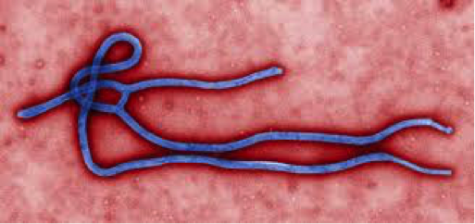Ebola Here to Stay

Ebola, the terrifying virus thought to have nearly been eradicated after striking the world with fear in 2014, has recently made headlines after a Scottish nurse and Ebola survivor was admitted into the Royal Free Hospital in London for Ebola. According to recent reports from the hospital, “her condition has deteriorated and she is now critically ill.”
How has she managed to re-contract the virus in Europe? As it turns out, all evidence points to suggest that it never left her body. Numerous accounts of individual cases and studies have opened up a window into where the virus goes and what it is capable of, even after a survivor’s body has removed it from the blood stream.
Many research papers have been released discussing the topic. Following an outbreak in 1995, researchers examined 19 survivors for years after Ebola remission. Many reported joint pain and vision problems as a result of contracting the virus. One man even went blind.
Other studies from the 1970s and 1980s found, like recent research, that the virus can be found present in the semen and eyes of survivors. In 2007, researchers followed 49 survivors and found that 90 percent had chronic joint pain, blurred vision, difficulty sleeping, difficulty swallowing, hearing loss and confusion as a result of the virus.
Following the 2014-2015 outbreak, researchers have studied 105 survivors, with 90 percent reporting joint pain and 98 percent describing poor appetites or an aversion to food. Many also had difficulty with short-term memory, headaches, sleeplessness, insomnia, dizziness, abdominal pain, constipation, sexual dysfunction and decreased exercise tolerance.
All of this research has lead scientists to believe that Ebola never fully leaves the body after contraction. Through extensive research, it has been found that the virus hides in nooks and crannies; the unreachable places for the our immune systems within the human body. Most commonly it has been detected in the eyes, semen, the uterus, and in joint space of survivors. Although Ebola in the joint space causes arthritis, it does not pose a public health risk.

But when it comes to other regions of the body, it is a huge source of concern. One healthy man, nine months after recovering, was discovered to have the Ebola virus still alive in his semen and even has transmitted the disease to his sexual partner.
The virus has also been found hiding in women’s uteruses. Most women who were pregnant when they contracted the virus had miscarriages. Even cured mothers sometimes gave birth to babies who were stillborn and often anatomically abnormal, as a result of being stricken with Ebola in the womb.
One of the most famous cases of Ebola in regions of the bodies of survivors was seen in Dr. Ian Crozier, who had contracted and survived Ebola only to have one of his blue eyes turn green. The rest of his body was Ebola free; the virus was not even found present in his tears, but his eye was still infected and he nearly went blind.
According to Dr. Daniel Bausch, a specialist of infectious diseases at Tulane University, “We’ve always known that it wasn’t completely over, there is always a possibility that the seed of this outbreak is still out there. So we’ve always known that there was the potential for reintroduction from the wild, but I think more recently and with these data coming in, we’re understanding that there’s also this potential for reintroduction from persistent virus production in humans, most notably from sexual transmission.”
Other evidence suggests that survivors cleanse their systems of the Ebola virus over time. But, says Bausch, it is probably not the day that they walk out of the Ebola treatment center.
The U.S. National Institute of Allergy and Infectious Diseases is pairing up with the Ministry of Health of Liberia to perform a five-year long study on 1,500 survivors of the most recent outbreak along with 6,000 of their close contacts. They’ll monitor health issues, organ and eye function and possibly body fluid content. More likely than not, the data found by this study will just confirm what we already knew about the virus, but there is always the possibility of a discovery being made.
Update: It is reported that the London nurse suffering with Ebola has made a full recovery.








